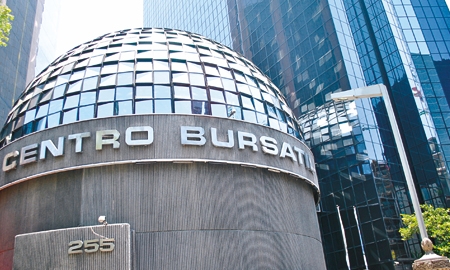Mexico stands as one of the world’s largest economies with the most room for growth in the financial sector. Merely one-fifth of Mexicans have current accounts and bank loans only total 26% of GDP, less than half of Brazil’s 49% and far under Chile’s 80% debt-to-GDP ratio. Moreover, just 15% of total credit to the private sector goes to small and medium-sized enterprises (SMEs).
Nevertheless, the financial system is strong and President Eduardo Peña Nieto believes that now is the ideal time to introduce reforms to further reinforce it.
As Dr. Luis Videgaray, Secretary of Finance and Public Credit, says: “The soundness and stability of the Mexican financial system is an asset that we must preserve. For this reason, the financial reform proposes to take steps to make the sector grow, while maintaining the prudent measures and calm that characterizes it today.
“The reform represents a unique opportunity for the financial sector to contribute to more widespread, inclusive development that supports growth in Mexico.”
In essence, the financial reform President Peña Nieto proposed in May aims to advance Mexico’s development and encourage commercial banks to provide a higher number of loans, preferably (albeit not mandatorily) at lower rates of interest, “with special emphasis on priority areas for national development,” explains Dr. Videgaray.
Although still not passed, the reform is already making waves; the national Development Bank announced in June that it would lend or guarantee 9.4% more loans than the previous year. Bloomberg News reports that loans to the private sector could rise by as much as 15% this year.
Other goals of the reform are to increase competition in the foreign bank-dominated financial sector and streamline bankruptcy laws so as to safeguard the rights of both banking customers and the banks themselves in terms of claiming assets of companies that default on payments.
“The Federal Competition Commission will conduct a diagnostic study to analyse and evaluate the conditions of competition in the financial system, and with this, formulate recommendations to the financial authorities to improve competition in the sector,” explains Dr. Videgaray.
The reform proposes measures to protect financial services users and give them greater liberty to choose and migrate their financial products to the institutions that offer the best conditions.”
If it goes through, the financial reform bill should have ripple effects on the entire population – more people will have the opportunity to open interest-accruing savings accounts and more entrepreneurs and small business owners will gain access to credit. The Finance Secretary points out that although SME loans account for just 15%, the sector generates nearly three-quarters of the country’s jobs.
“Currently, most SMEs can only be financed through informal channels which are characterized by their high costs. With the financial reform – through the promotion of competition, the strengthening of guarantee schemes and the joint participation of commercial banks and the Development Bank – the competitiveness, productivity and efficiency of the SME sector should increase and thus generate more employment and contribute more to Mexico’s economy,” he says.
There are, nevertheless, various successful and far-reaching credit institutions in Mexico that target the informal sectors and the underbanked. Crédito Real is one such firm, whose customers often have little or no credit history, and little or no collateral.
“In Mexico, 79% of the population belongs to the C,D and E classes. We started our company 20 years ago to address these social classes which were usually neglected by the traditional banks,” explains Ángel Romanos, General Manager of Crédito Real.
“Traditional banking and the credit sector, which is where Crédito Real is, are very different from each other. Traditional banks have tried to reach our niche markets, but have been unsuccessful because one has to go out and find them. The social classes we cater for are simply not used to entering bank branches.”
With a roster of about half a million clients, Crédito Real offers payroll lending and microfinancing, in which loans average about US$800. “We have a social commitment towards the country and we encourage development,” adds Mr. Romanos.
The bank’s dedication has certainly paid off. Although it has only reached one-fifth of the potential market, according to the General Manager’s estimates, Crédito Real has grown its revenue at double-digit rates annually since 2008. Between 2011 and 2012, its net earnings rose by 47.8% and its total portfolio, by 22.1%.

0 COMMENTS